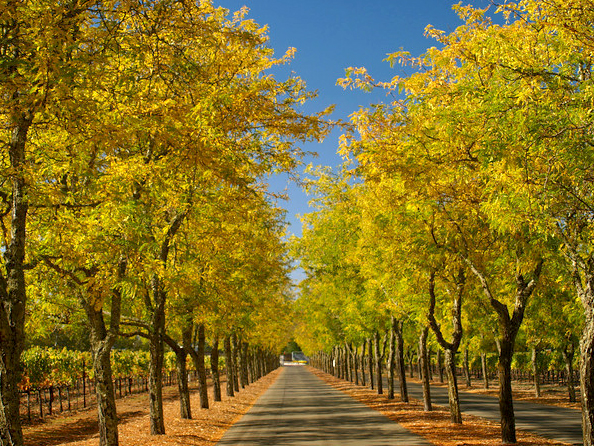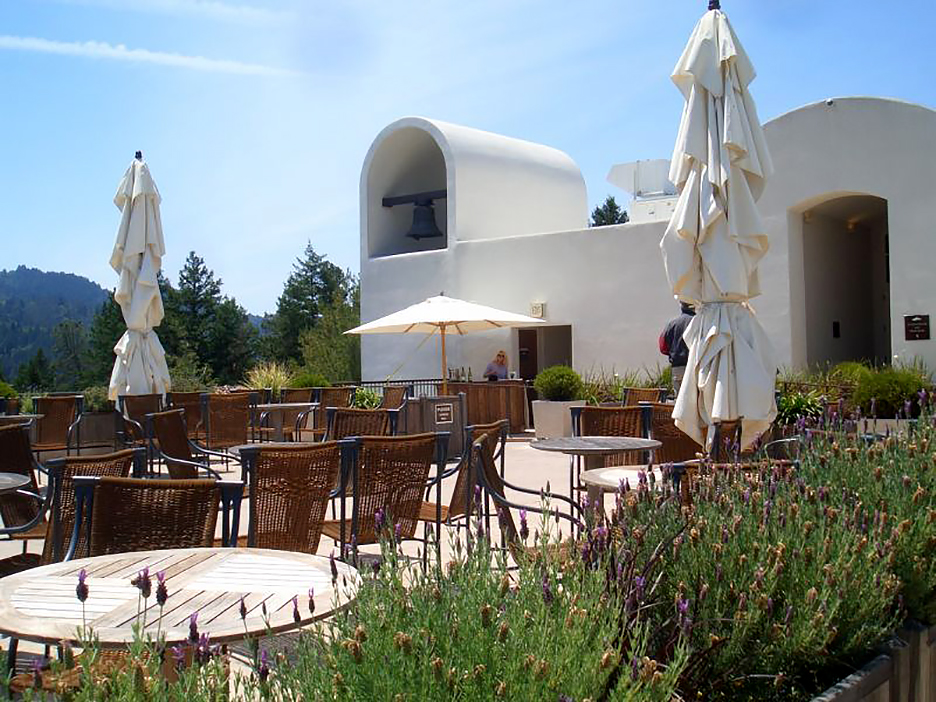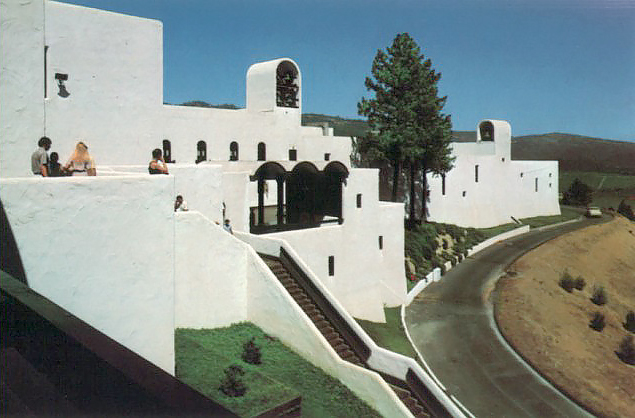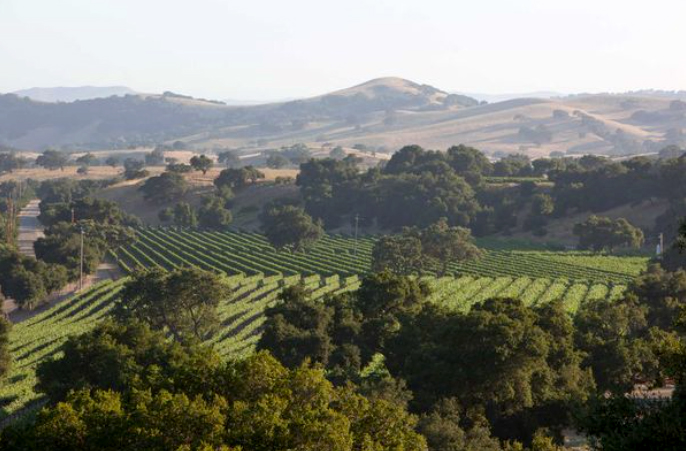Medium copper color; cherry blossoms, strawberry on the nose; strawberry, raspberry on the palate.
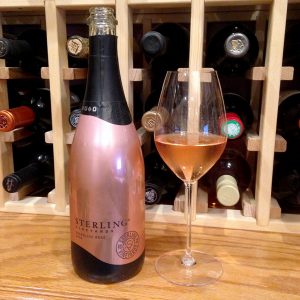
Dry; tangy, concentrated fruits; perceived sweetness from ripe grapes. Blend of 70% chardonnay, 30% pinot noir; the pinot noir spent time on the skins to generate the copper-pink color. The grapes underwent second and third pressing to extract as much juice as possible, so this lacks some complexity. Made using Charmat Method, which means it was fermented in a closed stainless steel tank rather than the traditional Champagne method with second fermentation in the bottle. While the extra pressing and Charmat Method are signals of a commodity effort rather than an artisanal one, this performs well for what it is.
Sterling Vineyards began when British international newspaper owner Peter Newton purchased land near Calistoga in Napa Valley in 1964 and established the vineyards. In quick succession, he purchased more land and, in addition to cabernet sauvignon, planted merlot (then virtually unknown in Napa), chardonnay, and sauvignon blanc.

Bottling began in 1969, including California’s first vintage-dated merlot. In 1971, Martin Waterfield—an officer in Newton’s company—designed a Mediterranean-style white stucco winery complex inspired by structures on the Greek island of Mykonos, where Newton once lived. Today, the complex is one of the most-visited in Napa.
The Newton family sold the winery and vineyards to Coca Cola in 1977. In 1982, Coke sold the operation to Joseph E. Seagram and Sons, and Sterling quickly became the crown jewel of Seagram’s wine efforts. Between 1982 and 2000, Sterling’s yearly sales jumped from less than 60,000 cases to 400,000. Even better, quality improved.
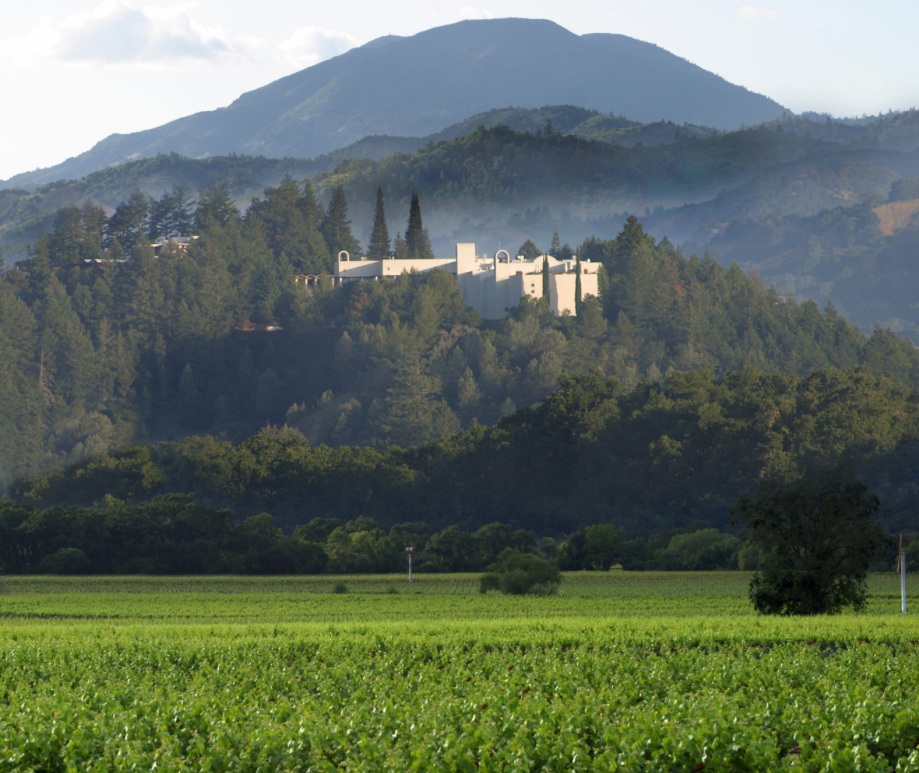
In 2001, Diageo—a United Kingdom drinks conglomerate—purchased Seagram and mixed Sterling into its existing wine business. In 2015, Diageo sold most of its wine business to Treasury Wine Estates, an Australian-based global winemaking and distribution operation that traces its roots to Penfolds Wine and Foster’s Group beer brewers.
Treasury is a major international player in the wine world, making wine in 12 countries, selling more than 35 million cases of wine a year, and generating sales of more than $2 billion in sales. Labels you may recognize beyond Sterling include Stags’ Leap, Beaulieu Vineyard, Beringer, Chateau St. Jean, Greg Norman Estates, Lindeman’s, Wolf Blass, and their flagship—Penfolds. That represents lots of changes and marketing directions for Sterling. Treasury tends to focus on commodity wines sold in supermarkets and mass-market liquor-beer-wine stores, which is where Sterling Vineyards largely resides today. This effort is an example that Sterling delivers solid if not spectacular wine at its price points; widely available.
Sterling Vineyards Sparkling Rosé 2016 has nice red fruits set off by tincture of tang, some creaminess on the finish, easy drinker, nice sparkling for the production methods employed. Sparkling rosé is extremely versatile, so it is hard to mess up a food pairing. Consider fish first, from halibut to salmon; mustard-roasted pork loin; spiced chicken; lamb with herbs; spicy foods, including Asian fusion; goat cheese. As earlier noted, almost anything. $23-27
